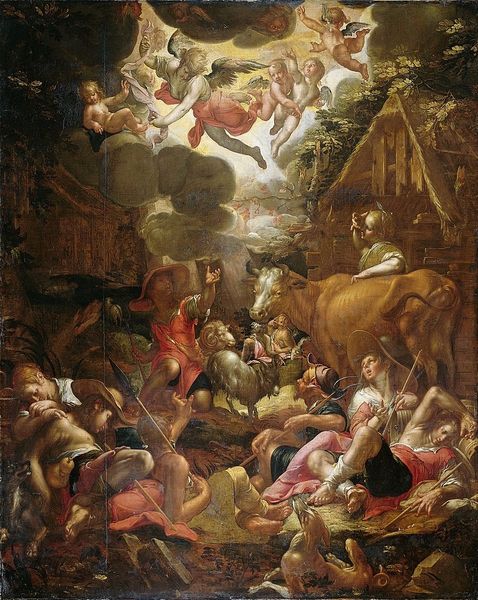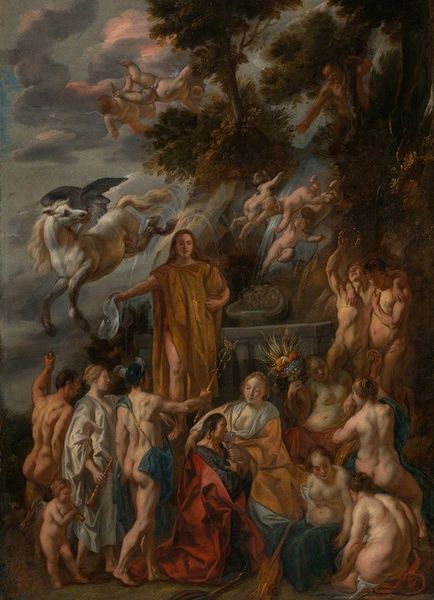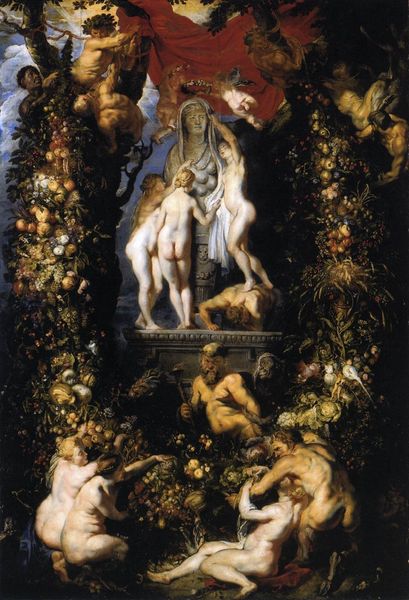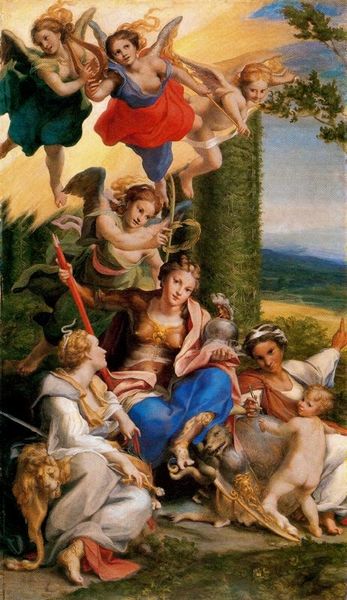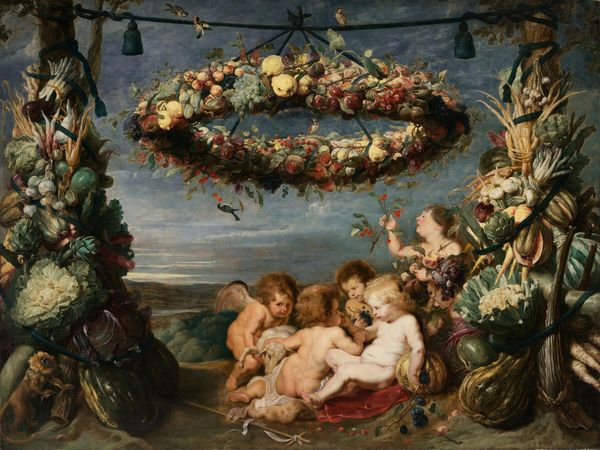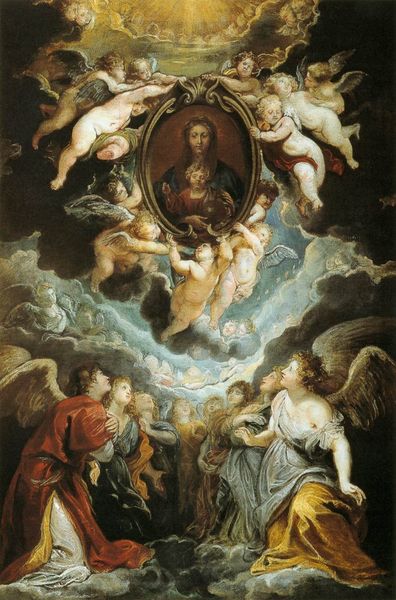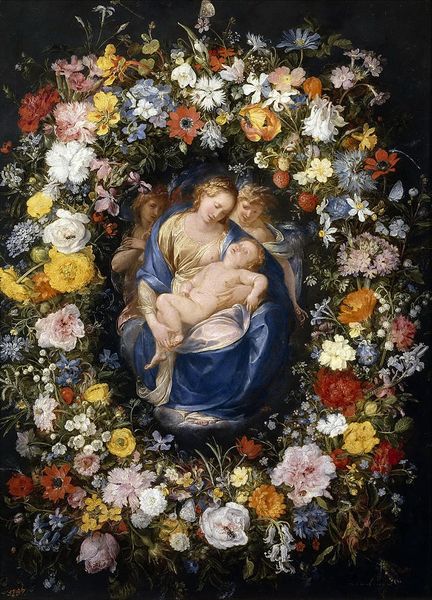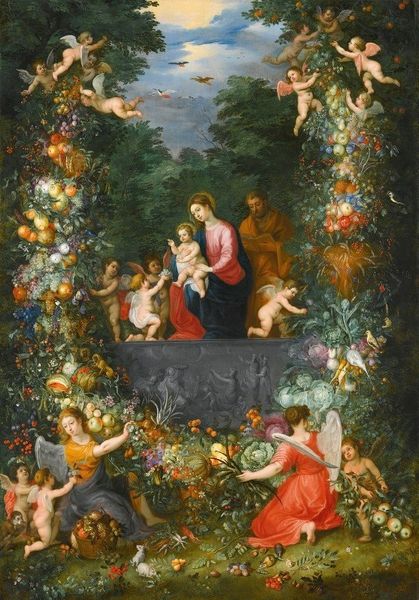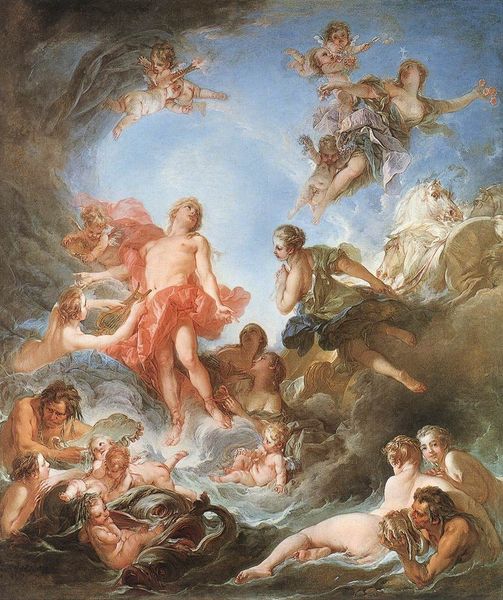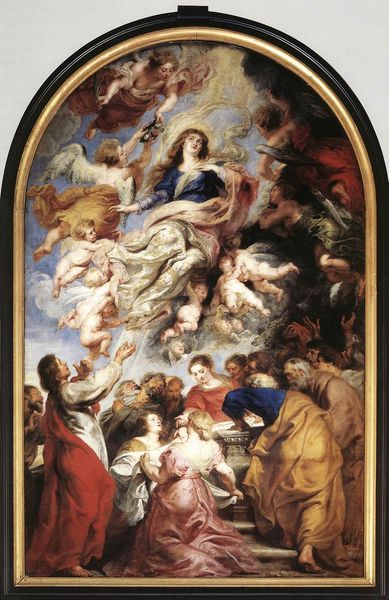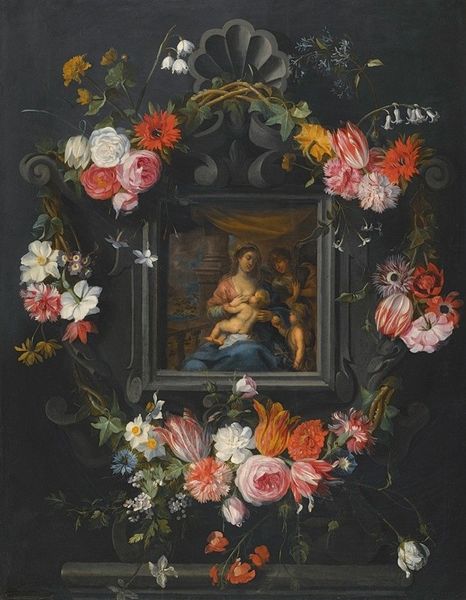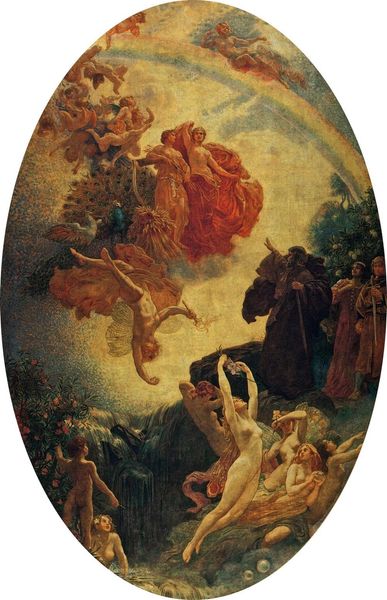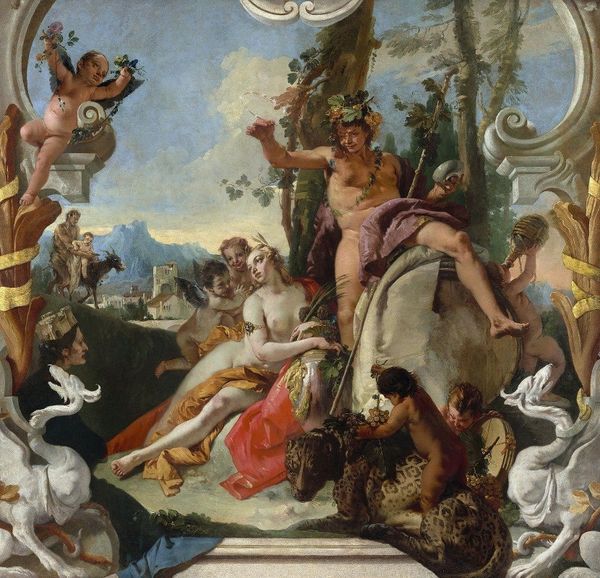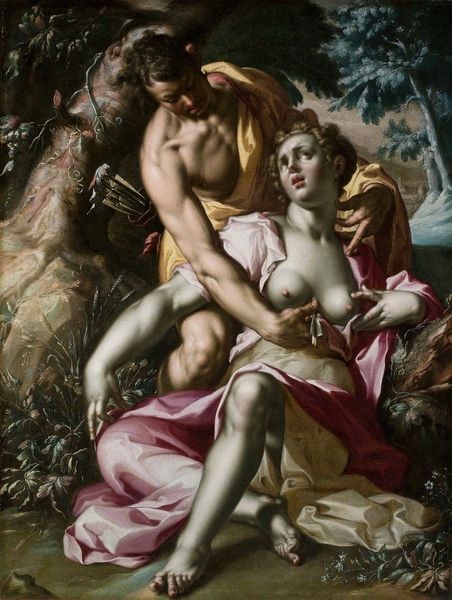
Garland of Fruit Surrounding a Depiction of Cybele Receiving Gifts From Personifications of The Four Seasons c. 1620 - 1622
0:00
0:00
tempera, oil-paint
#
allegory
#
baroque
#
tempera
#
oil-paint
#
landscape
#
figuration
#
oil painting
#
group-portraits
#
mythology
#
history-painting
#
nude
Copyright: Public Domain: Artvee
Curator: What strikes me first is the sheer opulence. It's bursting with life. Editor: This is “Garland of Fruit Surrounding a Depiction of Cybele Receiving Gifts From Personifications of The Four Seasons,” a collaboration dating from 1620-1622. The garland is by Jan Brueghel the Younger and the central depiction is attributed to another artist. It’s oil and tempera on panel. The profusion of fruit, flowers, and figures is quite intentional. Curator: Absolutely. All this material abundance also has symbolic resonance. Can we unpack some of the ways this relates to power, gender, and perhaps class? Editor: Cybele, the ancient Phrygian mother goddess, is central here, framed by the gifts of the seasons. What is intriguing is that this representation is, itself, contained within the larger construction, the garland. Brueghel's frame of hyper-realistic natural specimens points to the tradition of the decorative still life—itself a rising genre reflecting merchant wealth and scientific observation. Curator: Exactly! And look at the detail—every leaf, every piece of fruit, meticulously rendered. The artist is demonstrating control, almost a manufacturing dominance, over nature. There's the suggestion of colonial expansion and the manipulation of global resources contained right here, even if flowers appear to bloom seamlessly with fruit. The labor that brought each object into view is conspicuously absent, replaced by an idealized scene of fertility. Editor: Agreed, although that idealism carries ideological weight. We're asked to participate in a celebration of the existing order. However, for contemporary viewers, the idealized nudes of the female figures might encourage scrutiny of issues of representation, gender, and historical objectification. Also, note the racialized rendering of certain figures within the central tableau, signaling hierarchical constructions of race and power embedded within this apparently celebratory scene. Curator: So true. And this reminds us how Baroque art engaged new markets eager to display collections of expensive and newly available goods. These still lifes weren't simply decorative; they served as declarations of status. The consumption, in turn, drove further exploration, harvesting and subjugation… a never-ending spiral. Editor: It does invite some complex reflections on nature, representation, and society. Curator: Yes, seeing the artistry but recognizing the wider context—it is key here.
Comments
No comments
Be the first to comment and join the conversation on the ultimate creative platform.
